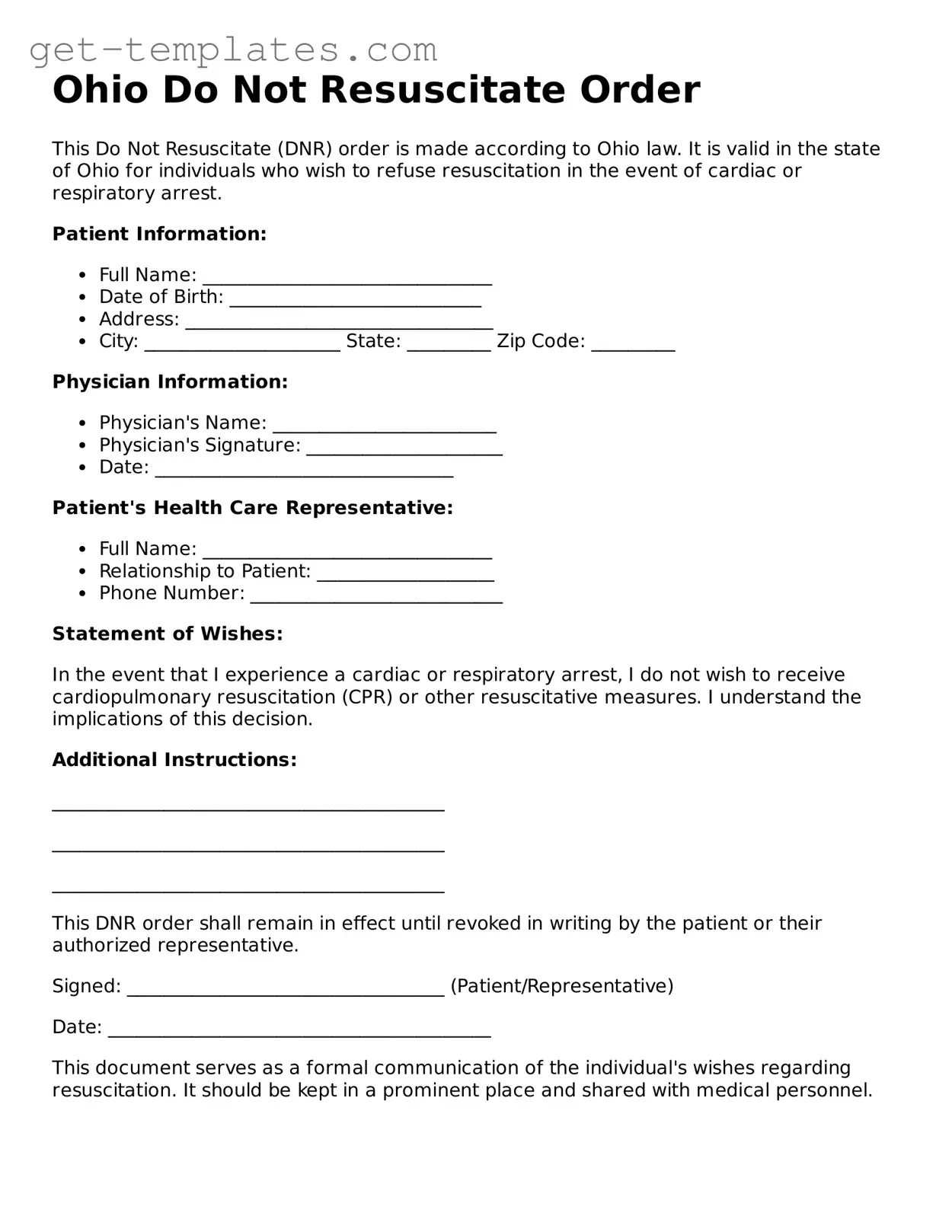Ohio Do Not Resuscitate Order
This Do Not Resuscitate (DNR) order is made according to Ohio law. It is valid in the state of Ohio for individuals who wish to refuse resuscitation in the event of cardiac or respiratory arrest.
Patient Information:
- Full Name: _______________________________
- Date of Birth: ___________________________
- Address: _________________________________
- City: _____________________ State: _________ Zip Code: _________
Physician Information:
- Physician's Name: ________________________
- Physician's Signature: _____________________
- Date: ________________________________
Patient's Health Care Representative:
- Full Name: _______________________________
- Relationship to Patient: ___________________
- Phone Number: ___________________________
Statement of Wishes:
In the event that I experience a cardiac or respiratory arrest, I do not wish to receive cardiopulmonary resuscitation (CPR) or other resuscitative measures. I understand the implications of this decision.
Additional Instructions:
__________________________________________
__________________________________________
__________________________________________
This DNR order shall remain in effect until revoked in writing by the patient or their authorized representative.
Signed: __________________________________ (Patient/Representative)
Date: _________________________________________
This document serves as a formal communication of the individual's wishes regarding resuscitation. It should be kept in a prominent place and shared with medical personnel.
